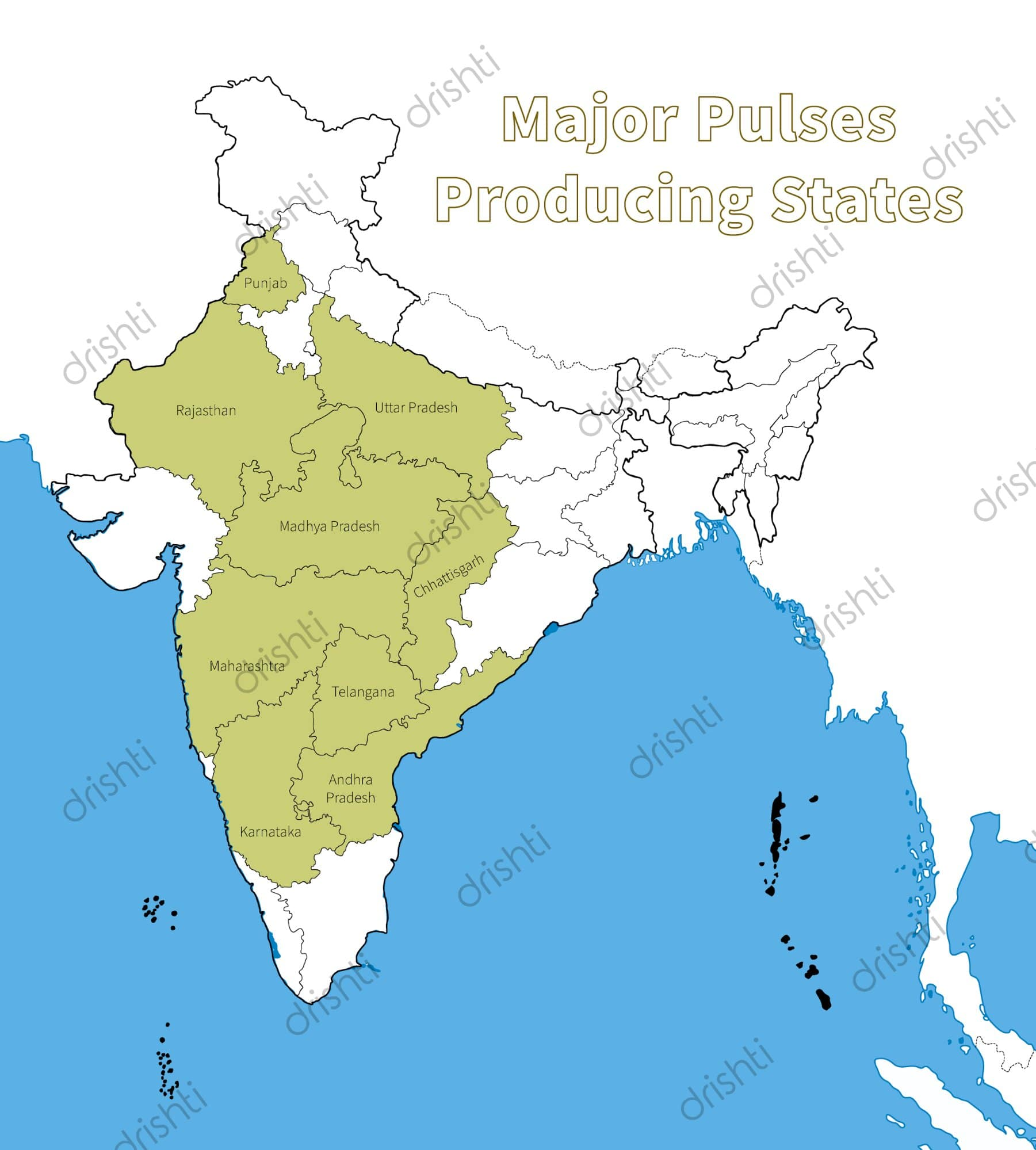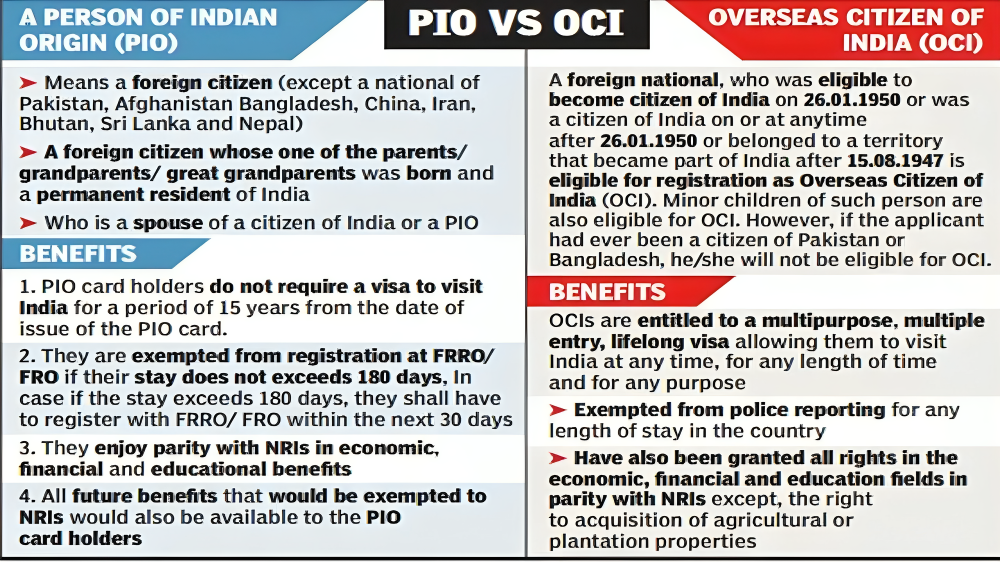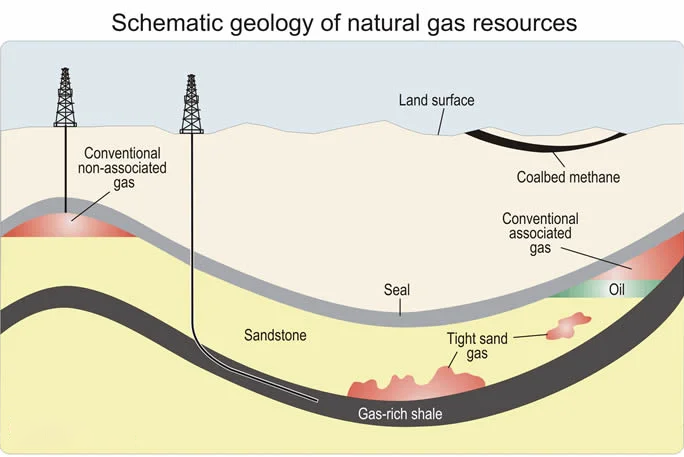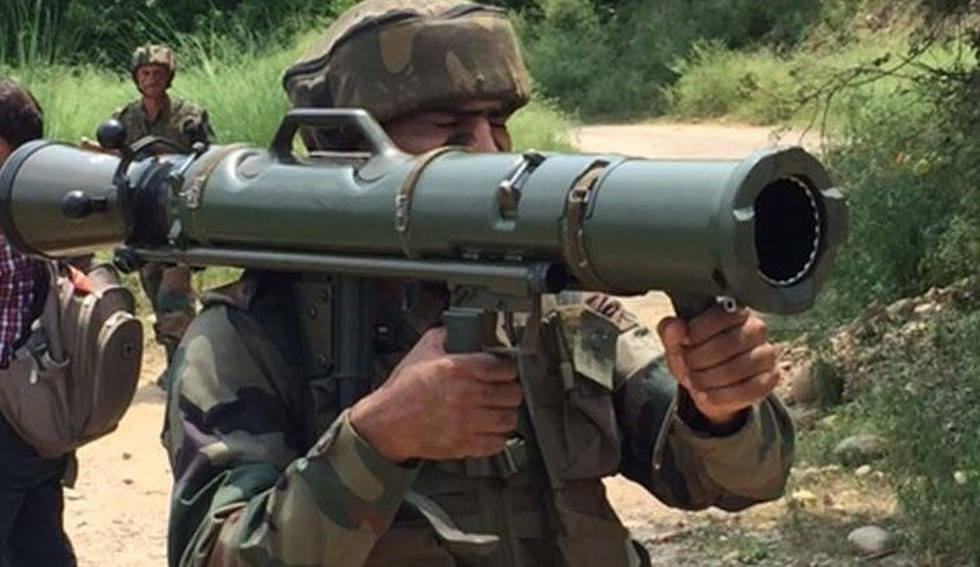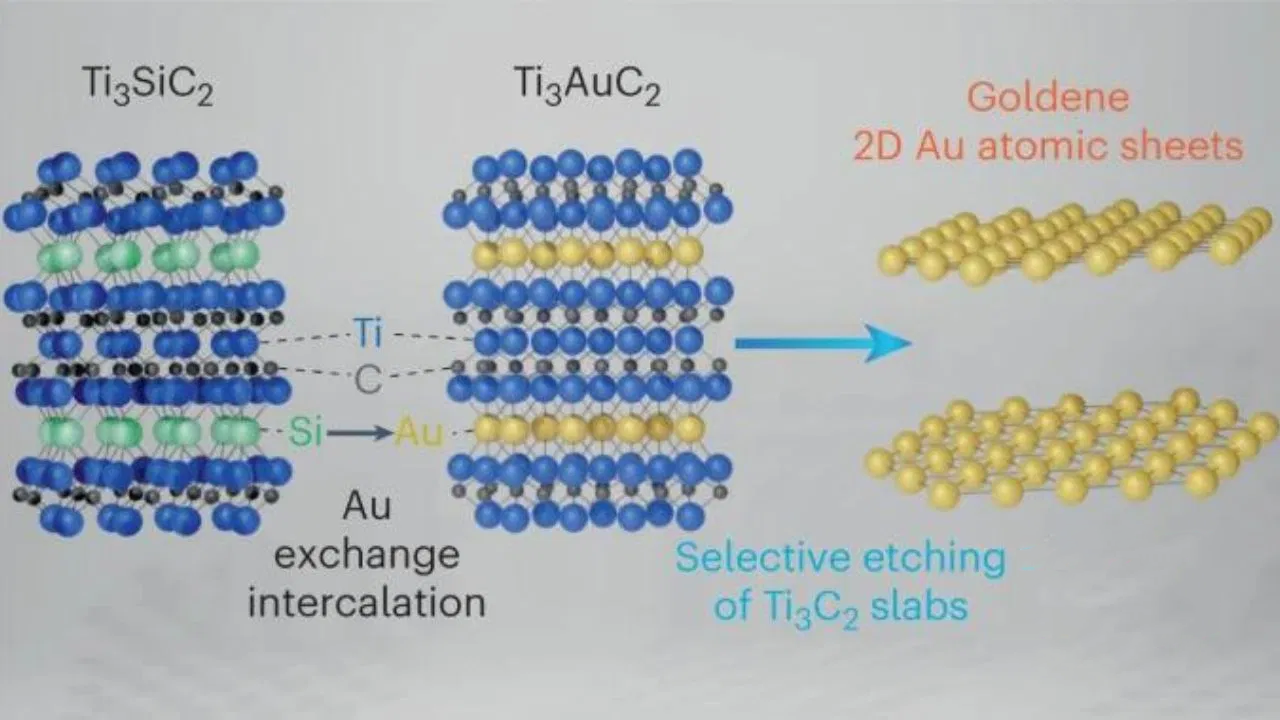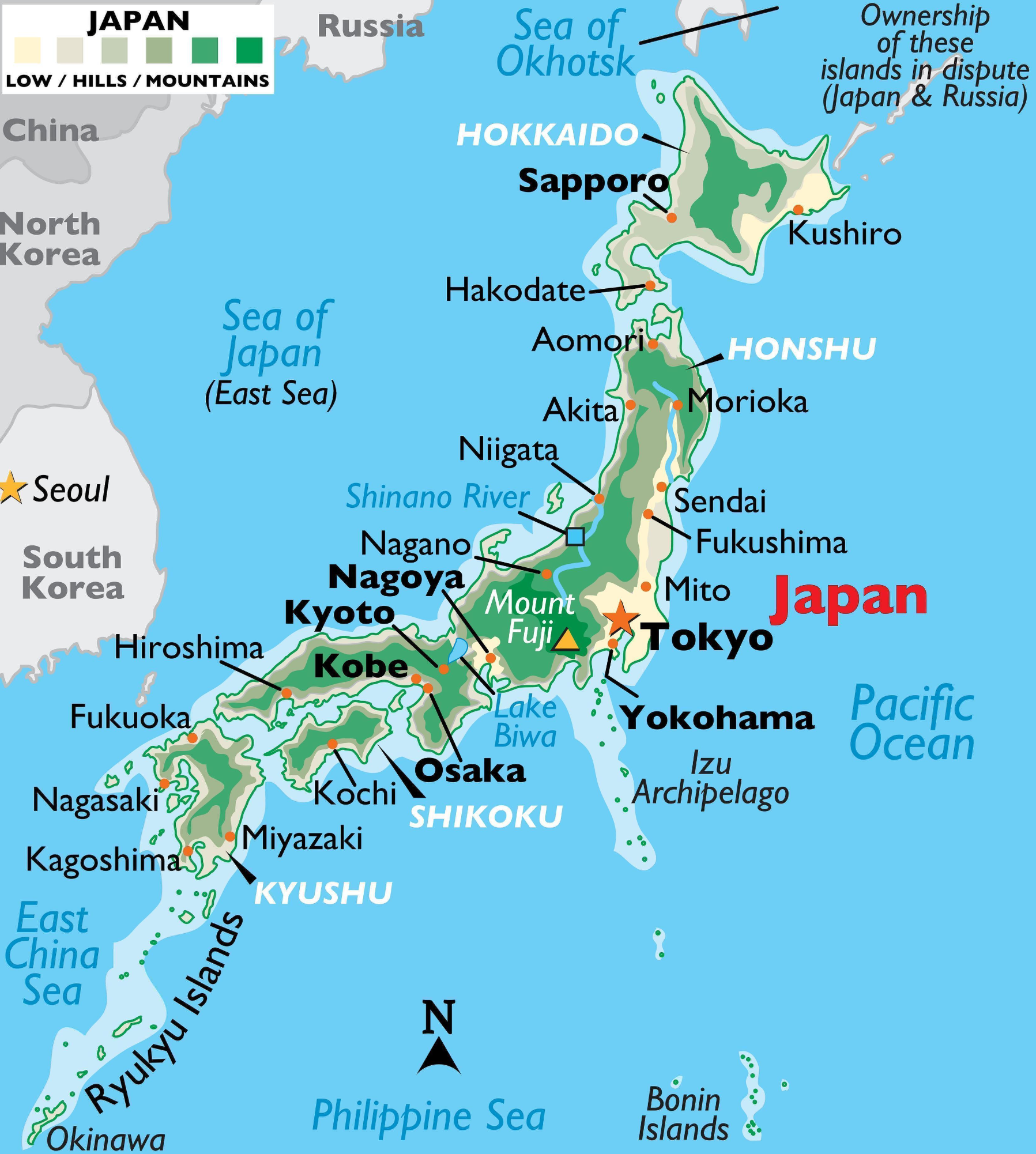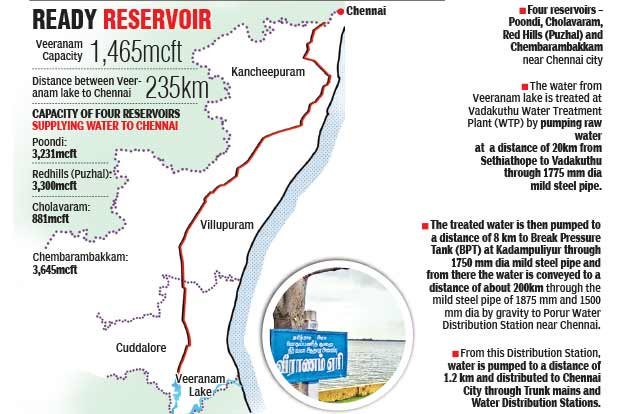Agriculture
India's Pulses Imports in FY24 Hit 6-Year High
For Prelims: Pulse crops, (PM-AASHA), Minimum Support Price (MSP), Indian Council of Agricultural Research (ICAR), hidden hunger
For Mains: Current trends of India’s Pulses production and imports, Issues regarding India’s pulses import, and related government initiatives.
Why in News?
India's pulses imports skyrocketed 84% in fiscal 2024, reaching a six-year high. This jump follows lower production and the government's decision to waive import duties on red lentils and yellow peas.
What is the Current Status of Pulses in India?
- India’s Pulses Production Status:
- India is the largest producer (25% of global production), consumer (27% of world consumption), and importer (14% of pulses) in the world.
- Pulses account for around 20% of the area under foodgrains and contribute around 7%-10% of the total foodgrains production in the country.
- Madhya Pradesh, Maharashtra, Rajasthan, Uttar Pradesh, and Karnataka are the top five pulses-producing states.

- India’s Pulses Import Status:
- India imported 4.65 million metric tons of pulses in the fiscal year 2023-24 (up from 2.53 million tons in 2022-23), the highest since 2018-19.
- In value terms, imports of pluses jumped 93% to USD 3.75 billion.
- Red lentil imports, particularly from Canada, doubled to 1.2 million tons.
- Duty-free imports from December onwards led to a rise in yellow pea imports from Russia and Turkey.
- The South Asian nations including India, usually import pulses from Canada, Myanmar, Australia, Mozambique, and Tanzania.
- India imported 4.65 million metric tons of pulses in the fiscal year 2023-24 (up from 2.53 million tons in 2022-23), the highest since 2018-19.
- Pulses:
- Temperature: Between 20-27°C
- Rainfall: Around 25-60 cm.
- Soil Type: Sandy-loamy soil.
- These are the major sources of protein in a vegetarian diet.
- Being leguminous crops, all these crops except arhar help in restoring soil fertility by fixing nitrogen from the air. Therefore, these are mostly grown in rotation with other crops.
- Pulses are grown throughout the agricultural year.
- Rabi Pulses (contribute over 60%): Gram (chickpea), Chana (Bengal gram), Masoor (lentil), Arhar (pigeon pea).
- Rabi crops require a mild cold climate during the sowing period, during vegetative to pod development- cold climate, and during maturity/ harvesting - warm climate.
- Kharif Pulses: Moong (green gram), Urad (black gram), Tur (arhar dal).
- Kharif pulse crops require a warm climate throughout their life from sowing to harvesting.
What are India’s Initiatives to Boost Pulses Production?
- National Food Security Mission (NFSM)-Pulses:
- The NFSM-Pulses initiative, led by the Department of Agriculture & Farmers Welfare, operates in 28 States and 2 Union Territories including Jammu & Kashmir and Ladakh.
- Key Interventions Under NFSM-Pulses:
- Assistance to farmers through States/UTs for various interventions.
- Cropping system demonstrations.
- Seed production and distribution of HYVs/hybrids.
- Additionally, the establishment of 150 Seed Hubs for Pulses has significantly contributed to increasing the availability of quality pulse seeds.
- Pradhan Mantri Annadata Aay SanraksHan Abhiyan (PM-AASHA) Scheme:
- This comprehensive umbrella scheme (launched in 2018) comprises three components:
- Price Support Scheme (PSS): Procurement from pre-registered farmers at Minimum Support Price (MSP).
- Price Deficiency Payment Scheme (PDPS): Compensates farmers for price differences.
- Private Procurement Stockist Scheme (PPSS): Encourages private sector participation in procurement.
- This comprehensive umbrella scheme (launched in 2018) comprises three components:
- ICAR's Role in Research and Variety Development:
- The Indian Council of Agricultural Research (ICAR) plays a pivotal role in enhancing the productivity potential of pulse crops through research and development efforts. The ICAR focuses on:
- Basic and strategic research on pulses.
- Collaborative applied research with State Agricultural Universities.
- Development of location-specific high-yielding varieties and production packages.
- During the period from 2014 to 2023, an impressive 343 high-yielding varieties and hybrids of pulses have been officially recognised for commercial cultivation across the country.
- The Indian Council of Agricultural Research (ICAR) plays a pivotal role in enhancing the productivity potential of pulse crops through research and development efforts. The ICAR focuses on:
What are the Reasons Behind India’s Dependence on Pulses Imports?
- Shifting Cropping Patterns:
- Traditionally, farmers in India practised crop rotation with pulses. However, in recent decades, there has been a shift towards cultivating water-intensive cereals like rice and wheat due to the following reasons.
- Rice and wheat are staples in most Indian diets, leading to a rise in consumption demands.
- Government incentives like higher margins over the average cost of production in MSPs and assured procurement for these crops.
- Availability of better irrigation facilities in some areas.
- Traditionally, farmers in India practised crop rotation with pulses. However, in recent decades, there has been a shift towards cultivating water-intensive cereals like rice and wheat due to the following reasons.
- Lower Profitability:
- Pulses often offer lower returns per hectare compared to cereals. This discourages farmers from planting them, especially on fertile and irrigated land.
- Climate Challenges:
- Erratic rainfall and droughts can negatively impact pulse production, which are generally rain-fed crops.
- Limited Technological Advancements:
- Compared to cereals and cash crops, research and development in pulse and higher susceptibility to diseases and pests.
What can be Done to Ensure India’s Self-Sufficiency in Pulses?
- Boosting Domestic Production:
- Offering minimum support prices (MSPs) for pulses that are competitive with other crops like rice and wheat.
- Providing subsidies for seeds, fertilisers, and other agricultural inputs specific to pulses.
- Offering crop insurance schemes to mitigate risks associated with weather fluctuations.
- Promote Crop Rotation:
- Encouraging the farmers to integrate pulses back into their cropping patterns by highlighting the long-term benefits of crop rotation for soil health and sustainable farming.
- Develop High-Yielding Varieties:
- Investing in research and development of drought-resistant, high-yielding pulse varieties suited to different regional conditions.
- Encourage the adoption of these improved varieties through farmer training and extension programs.
- Improving Irrigation Infrastructure:
- Expanding irrigation facilities to areas suitable for pulse cultivation, particularly drought-prone regions.
- Promoting water-efficient irrigation techniques like drip irrigation to conserve water.
- Mitigating Price Fluctuations:
- Improving storage facilities for pulses to minimise post-harvest losses and ensure price stability throughout the year.
- Streamline Supply Chain Management: Enhance efficiency in the supply chain to reduce transportation costs and minimise price manipulation by middlemen.
- Promotion of Alternative Protein Sources:
- Encouraging dietary diversification (addressing hidden hunger) by promoting the consumption of protein-rich alternatives like lentils, millets, and even eggs.
What is NAFED?
- National Agricultural Cooperative Marketing Federation of India Ltd. was established on the auspicious day of Gandhi Jayanti on 2nd October 1958.
- It is registered under the Multi-State Co-operative Societies Act.
- It is an apex organization of marketing cooperatives for agricultural produce in India.
- It is currently one of the largest procurers of agricultural products like onions, pulses, and oilseeds.
|
Drishti Mains Question: Q. Highlight the current status regarding India’s dependence on the import of pulses. Discuss the challenges regarding India’s self-sufficiency in pulses production and the possible solutions. |
UPSC Civil Services Examination, Previous Year Question (PYQ)
Prelims:
Q. With reference to pulse production in India, consider the following statements: (2020)
- Black gram can be cultivated as both kharif and rabi crop.
- Green gram alone accounts for nearly half of pulse production.
- In the last three decades, while the production of kharif pulses has increased, the production of rabi pulses has decreased.
Which of the statements given above is/are correct?
(a) 1 only
(b) 2 and 3 only
(c) 2 only
(d) 1, 2 and 3
Ans: (a)
Mains:
Q. How did India benefit from the contributions of Sir M. Visvesvaraya and Dr. M.S. Swaminathan in the fields of water engineering and agricultural science respectively? (2019)
Q. Explain various types of revolutions, took place in Agriculture after Independence in India. How have these revolutions helped in poverty alleviation and food security in India? (2017)

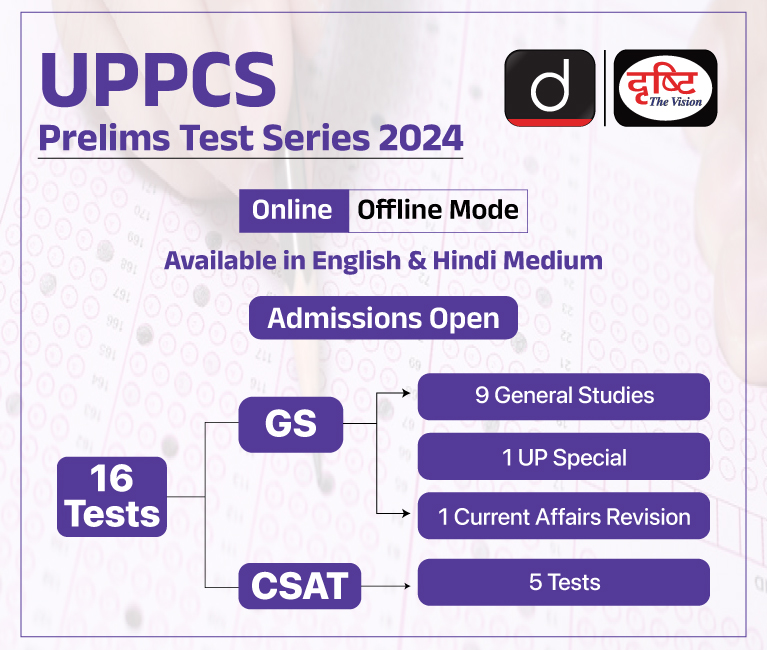
Governance
Passport Revocations of Goans
For Prelims: Overseas Citizenship of India (OCI), PIO, Passport Act of 1967, Citizenship
For Mains: Citizenship, Portuguese Rule, Role of Indian Diaspora
Why in News?
Recently, a memorandum issued by the Ministry of External Affairs (MEA) has led to the revocation of passports of more than 100 people from Goa in the past few months.
- These people, who may not have known about the memorandum, are accused of hiding important information when they tried to surrender their passports after becoming citizens of Portugal.
Why are the Passports Being Revoked?
- Goan’s Portuguese Connection:
- Goa is a former Portuguese colony, which was under Portuguese rule for approximately 450 years, from 1510 to 1961.
- According to Portuguese law:
- Those born in Goa before 19th December 1961 (the day Goa was liberated from Portuguese rule) and two future generations have the option to register as Portuguese citizens.
- Many Goans have transcribed their births in the Central Registry in Lisbon and acquired Portuguese citizenship.
- A Portuguese passport provides visa-free entry to several countries, including the UK and the European Union.
- The allure of overseas employment and educational opportunities has driven Goans to seek Portuguese citizenship.
- The 2022 Memorandum of MEA:
- The MEA issued a memorandum on 30th November 2022, specifically addressing the “surrender of Indian passport on account of acquisition of foreign nationality by an erstwhile Indian citizen.”
- The memorandum categorizes cases related to passport surrender certificates, and one particular category has resulted in the revocation of passports for some Goans.
- Under section 10 (3) (b) of the Passport Act of 1967, passports obtained by hiding the fact of having another country's citizenship can be cancelled even if they were not used for travel.
- Before this MEA memorandum, passport authorities used to impose a penalty for surrendering an Indian passport and issuing a surrender certificate, which was declared invalid by a 2020 Kerala High Court judgment, stating that passport authorities cannot impose penalties but can only prosecute for violations of the Passports Act.
- Revocation of Pasport and Issue of OCI Card:
- Dual Citizenship: Since India does not allow dual citizenship. Therefore, Goans acquiring official Portuguese passports must relinquish their Indian citizenship.
- OCI Status: The revocation of Indian passports has left these individuals unable to apply for Overseas Citizenship of India (OCI).
- A ‘surrender certificate’ issued by passport-issuing authorities has so far been a requirement for those who want to apply for OCI cards.
- However, on account of the revocation of their passport, these individuals couldn’t avail this option.
- Current memorandum of MEA, instructing passport authorities to issue 'revocation certificates' instead of surrender certificates in cases where Indian passports were obtained by concealing information.
- This will allow Indian nationals from former Portuguese territories who acquired Portuguese citizenship to apply for Overseas Citizenship of India (OCI).
- A ‘surrender certificate’ issued by passport-issuing authorities has so far been a requirement for those who want to apply for OCI cards.
- OCI status permits foreign citizens of Indian origin to live and work in India indefinitely.
Portuguese Rule in Goa
- Goa, situated on the west coast of India, was a Portuguese colony from 1510 to 1961.
- The small coastal area was conquered by Afonso de Albuquerque and became a vital trade hub for the Eastern spice trade.
- Remarkably, Goa served as the capital of the entire Portuguese Empire east of the Cape of Good Hope for 450 years.
- In the 1940s, as India moved closer to independence from British rule, the fight for freedom in Goa began.
- Finally, on 19th December 1961, more than four centuries after its colonisation, Goa was freed from Portuguese rule.
What is Overseas Citizenship of India (OCI) Card?
- About:
- The concept of OCI was introduced in response to demands for dual citizenship by the Indian diaspora, particularly in developed countries.
- The Ministry of Home Affairs defines an OCI as a person who:
- was a citizen of India on or after 26th January 1950; or
- was eligible to become a citizen of India on 26th January 1950; or
- is a child or grandchild of such a person, among other eligibility criteria.
- According to Section 7A of the OCI card rules, an applicant is not eligible for the OCI card if he, his parents, or grandparents have ever been a citizen of Pakistan or Bangladesh.
- The Government of India via the Citizenship (Amendment) Act, 2015, merged the Person of Indian Origin (PIO) category with the OCI category in 2015.
- Historical Background:
- The OCI Card scheme was launched during the Pravasi Bharatiya Divas in 2005.
- It was introduced as an acknowledgement of the persistent emotional attachment of the Indian diaspora to their country of origin and to acknowledge role of diaspora in nation's development.
- Benefits of the OCI Card:
- Multiple entry, multi-purpose lifelong visa to visit India.
- Exemption from registering with the Foreigners Regional Registration Office (FRRO) regardless of the duration of their stay.
- Parity with Non-Resident Indians (NRIs) in financial, economic, and educational fields.
- Limitations and Restrictions:
- They do not have the right to vote.
- They cannot purchase agriculture or farmland.
- All activities except research work for which special permission is required from the Indian Mission/Post/ FRRO concerned.
- Holders cannot participate in elections or hold public office, reflecting the government’s stance on maintaining clear boundaries between citizenship and overseas citizenship.
- Current Scenario:
- The OCI card scheme has been a key element of the Indian government’s effort to deepen its relationship with its diaspora.
- As of March 2020, the Ministry of Home Affairs had issued over 3.5 million OCI cards.
- The vast majority were issued to foreign nationals in the United States, United Kingdom, Australia, and Canada.
|
Drishti Mains Question: Q. Discuss the role and impact of the Indian diaspora on India's socio-economic development and its influence on India's foreign policy. How has the diaspora contributed to India's soft power and global standing? |
UPSC Civil Services Examination, Previous Year Question (PYQ)
Prelims:
Q. With reference to India, consider the following statements: (2021)
- There is only one citizenship and one domicile.
- A citizen by birth only can become the Head of State.
- A foreigner once granted citizenship cannot be deprived of it under any circumstances.
Which of the statements given above is/are correct?
(a) 1 only
(b) 2 only
(c) 1 and 3
(d) 2 and 3
Ans: (a)
Q. Consider the following statements: (2018)
- Aadhaar card can be used as a proof of citizenship or domicile.
- Once issued, Aadhaar number cannot be deactivated or omitted by the Issuing Authority.
Which of the statements given above is/are correct?
(a) 1 only
(b) 2 only
(c) Both 1 and 2
(d) Neither 1 nor 2
Ans: (d)
Mains:
Q. Indian diaspora has a decisive role to play in the politics and economy of America and European Countries. Comment with examples. (2020)


Science & Technology
Hydrocarbons Exploration and Extraction
For Prelims: Hydrocarbons, Hydrocarbon Exploration, Hydrocarbon Licensing Policy, Open Acreage Licensing Programme (OALP).
For Mains: The geological processes, extraction methods, and environmental impact of hydrocarbon extraction, Drawbacks of the New Exploration Licensing Policy (NELP), Hydrocarbon Exploration and Licensing Policy (HELP): Functions, Challenges, Advantages.
Why in News?
The two Industrial Revolutions were triggered by humanity's discovery of how to extract hydrocarbons. These hydrocarbons powered large engines, leading to contamination of the air, water, and atmosphere, and ultimately contributing to global warming.
- In light of escalating global warming, it's crucial for the world to consider less harmful ways of utilising hydrocarbons.
What are Hydrocarbons and their Storage?
- About:
- Hydrocarbons are organic compounds made up of Hydrogen and Carbon. While the carbon atoms create the compound’s framework, the hydrogen atoms attach to them in a variety of different configurations.
- Hydrocarbon Exploration is the search for deposits of hydrocarbons, such as petroleum and natural gas, in the Earth’s crust. It’s also known as oil and gas exploration.
- Kerogens are the lumps of organic matter and they are the primary source of hydrocarbons in the rocky underground.
- Kerogen can be deposited from three possible sources as the remains of a lake (lacustrine), a larger marine ecosystem, or a terrestrial ecosystem.
- Rocks surrounding the kerogen can become warmer, more compactified over time, exerting forces on the kerogen that cause it to break down.
- Lacustrine kerogen yields waxy oils; marine kerogen, oil and gas; and terrestrial kerogen, light oils, gas, and coal.
- Types: Based on their structure and bonding, Hydrocarbons can be classified as:
- Alkanes (Saturated):
- Structure: Consists of single bonds between carbon atoms.
- General Formula: Cn H2n+2 . Examples: Methane (CH4) and ethane (C2H6).
- Properties: Non-reactive; used primarily as fuels.
- Alkenes (Unsaturated with Double Bonds):
- Structure: Contain at least one double bond between carbon atoms.
- General Formula: Cn H2n . Examples: Ethylene (C2H4) and propylene (C3H6).
- Properties: More reactive than alkanes due to the double bond; used in chemical synthesis and as a precursor for plastics.
- Alkynes (Unsaturated with Triple Bonds):
- Structure: Contain at least one triple bond between carbon atoms.
- General Formula: Cn H2n−2
- Examples: Acetylene (C2H2).
- Properties: Extremely reactive; used in welding (oxy-acetylene torches) and as a chemical building block.
- Aromatic Hydrocarbons (Arenes):
- Structure: Contain rings of carbon atoms with alternating double bonds (aromatic rings).
- Examples: Benzene (C6H6) and toluene (C7H8).
- Properties: Stable due to their aromatic rings; used in the manufacture of dyes, detergents, and explosives.
- Alkanes (Saturated):
- Formation and Storage:
- Hydrocarbons occur naturally in plants, trees, and fossil fuels. Such compounds serve as the primary components of petroleum and natural gas and can be utilised in a wide range of different applications, such as fuels, and the production of plastics.
- Crude Oil and Natural gas are found under Sedimentary Rocks.
- These reservoirs are created when a more resistant rock type overlays a less resistant one, in effect creating a lid that causes hydrocarbons to accumulate below it.
- Their formation takes place over millions of years. The process of formation is as follows:
- The dead plants and animals get buried underground providing the carbon content for the hydrocarbons to be formed.
- Eventually a layer of mud settles over the buried debris, and mud gets converted to rock.
- Intense heat and pressure changes transform this debris into fossil fuels. I.E. crude oil and natural gas.
- The absence of oxygen and air is an important requisite for the formation.
- If the rock is impervious the crude oil remains locked under the sedimentary rock.
- Natural gas being less dense floats over the Crude oil.
Globally Top Oil Producers and Consumers Country:
- The top 5 Oil Producers and share of total world oil production
| Country | Share of world total |
| United States | 22% |
| Saudi Arabia | 11% |
| Russia | 11% |
| Canada | 6% |
| China | 5% |
- The top 5 Oil Consumers and share of total world oil consumption
| Country | Share of world total |
| United States | 20% |
| China | 15% |
| India | 5% |
| Russia | 4% |
| Saudi Arabia | 4% |
How are Hydrocarbons Accessed and Extracted?
- Accessing Hydrocarbons:
- Creating a Production Well: The first task is to create a production well, the principal hole through which the reservoir will be drained to the surface. Its location is chosen to maximise the amount of drainage.
- The well is created with a drilling machine.
- Casing and Cementing: Steel casings narrower than the hole are lowered into the well and surrounded by cement slurry to protect against cave-ins and prevent fluid intrusion.
- Drilling fluid, circulated around the drill bit, aids in cooling and removing rock cuttings.
- Blowout Prevention: The pressure at which the drilling fluid is delivered has to be carefully controlled otherwise it could force the hydrocarbons in the source rock to rush out and erupt on the surface like a volcano of oil.
- Mud-logging: It is the process of recording the rock cuttings by depth and studying their properties.
- Drilling: It is done by drilling rigs, which also come with generators and batteries to power various steps of the drilling process.
- These rigs can also be installed offshore, to boost their stability and aid extraction through the water column.
- Creating a Production Well: The first task is to create a production well, the principal hole through which the reservoir will be drained to the surface. Its location is chosen to maximise the amount of drainage.
- Extracting Hydrocarbons:
- Completing Stage: It is the process of draining out the hydrocarbons by removing the drill string from the borehole and punching small holes into the casing.
- Production Stage: Systems at the well’s head control the outflow of hydrocarbons using valves. Pump jacks are used to lift up hydrocarbons from the bottom of a well when the pressure difference is too low to bring the hydrocarbons to the surface.
- Depending on the methods required to maintain production it can be split into three phases: primary, secondary, and tertiary,.
- Primary phase relies on natural processes, like pressure differences between the reservoir and the well.
- Secondary phase involves inducing artificial pressure in the rock to maintain the differential.
- Tertiary phase uses enhanced recovery methods like steam injection to extract remaining hydrocarbons.
- Well Plugging and Decommissioning:
- Well extraction doesn't require full depletion; it's stopped when it is no longer profitable. Abandoned wells must be plugged to prevent hydrocarbon and gas escape.
- Decommissioning, the permanent sealing of a well, is costly and often not financially viable for operators.
Sedimentary Basins in India:
- There are 26 sedimentary basins in India, covering a total area of 3.4 million square kilometres.
- Of the total sedimentary area, 49% of total area is located onland, 12% in shallow water and 39% in the deepwater area.
- These basins are divided into three categories based on maturity of hydrocarbon resources as under:
- Category-I: Basins, which have reserves and are already producing.
- Category-II: Basins, which have contingent resources pending commercial production.
- Category-III Basins, which have prospective resources awaiting discovery.
Policies Related to Hydrocarbons Extraction in India:
- Hydrocarbon Exploration and Licensing Policy (HELP) was approved by government as an exploration and production policy that replaced the New Exploration Licensing Policy (NELP).
- The objective of the policy is to enhance domestic oil and gas production by intensifying exploration activity and investment.
- The new policy promises simpler rules, tax breaks, pricing and marketing freedom and is part of a government strategy to double oil and gas output by 2022-23.
- The policy is also aimed at enhancing transparency and reducing administrative discretion.
- HELP marks the biggest transition from an era of government control to government support for upstream E&P in India. Open Acerage Licensing Programme (OLAP) removes restrictions on exploration by giving companies both the data and the discretion to explore areas of their choice.
|
Drishti Mains Question: Q. Hydrocarbons play an important role in constituting the energy security of a country. But over dependence on energy imports can be a challenge to the energy security of India. In this context, discuss the initiatives that have been taken to cut down crude oil imports. |
UPSC Civil Services Examination, Previous Year Question (PYQ)
Prelims:
Q. The term ‘West Texas Intermediate’, sometimes found in news, refers to a grade of (2020)
(a) Crude oil
(b) Bullion
(c) Rare earth elements
(d) Uranium
Answer: (a)
Q. According to India’s National Policy on Biofuels, which of the following can be used as raw materials for the production of biofuels? (2020)
- Cassava
- Damaged wheat grains
- Groundnut seeds
- Horse gram
- Rotten potatoes
- Sugar beet
Select the correct answer using the code given below:
(a) 1, 2, 5 and 6 only
(b) 1, 3, 4 and 6 only
(c) 2, 3, 4 and 5 only
(d) 1, 2, 3, 4, 5 and 6
Ans: (a)
Mains:
Q. Access to affordable, reliable, sustainable and modern energy is the sine qua non to achieve Sustainable Development Goals (SDGs). Comment on the progress made in India in this regard. (2018)

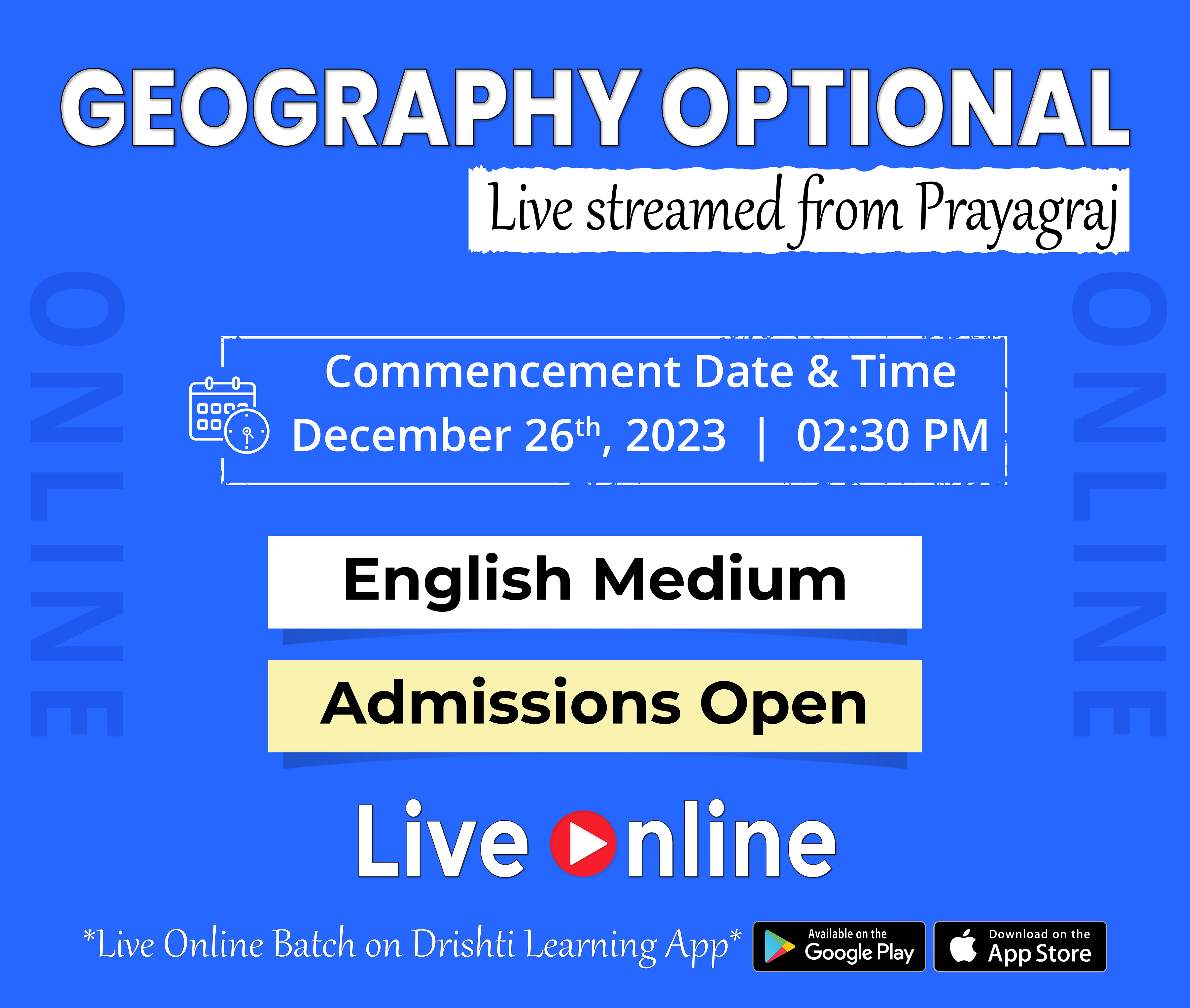
Important Facts For Prelims
Mahavir Jayanti
Why in News?
Recently, the Prime Minister of India inaugurated the 2550th Bhagwan Mahaveer Nirvan Mahotsav, on the auspicious occasion of Mahaveer Jayanti.
- Jains celebrate five Kalyanak’s (major events) of every Tirthankar including Mahavir Swami Ji: Chyavana/Garbha (Conception) Kalyanak; Janma (Birth) Kalyanak; Diksha (Renunciation) Kalyanak; Kevaljnana (Omniscience) Kalyanak and Nirvana (Liberation/Ultimate Salvation) Kalyanak.
- Prime Minister has also released a commemorative stamp and coin on the occasion.
What is Mahavir Jayanti?
- About:
- Mahavir Jayanti is one of the most auspicious festivals in the Jain community.
- This day marks the birth of Vardhamana Mahavira, who was the 24th and the last Tirthankara who succeeded the 23rd Tirthankara, Parshvanatha.
- According to Jain texts, Lord Mahavira was born on the 13th day of the bright half of the moon in the month of Chaitra.
- As per the Gregorian calendar, Mahavir Jayanti is usually celebrated during the month of March or April.
- A procession is called with the idol of Lord Mahavira called the Rath Yatra.
- Reciting stavans or Jain prayers, statues of the lord are given a ceremonial bath called abhisheka.
- Lord Mahavira:
- Bhagwan Mahavir Swami left an indelible mark on humanity through his profound spiritual practices and teachings.
- Lord Mahavir was named Vardhamana, which means “one who grows”.
- During his twelve-year period of spiritual practices, Bhagwan Mahavir exhibited four extraordinary qualities:
- Deep and Undisturbed Meditation: His unwavering focus allowed him to attain profound insights.
- Rigorous Penance: He endured extreme physical hardships to purify his soul.
- Tolerance of Pain: Mahavir Swami demonstrated remarkable endurance.
- Ultimate Equanimity: His inner balance remained unshaken.
- On the tenth day of the Vaishakh, Mahavir’s journey reached a pivotal moment.
- Among the 5 teachings of Jainism the Brahmacharya (Celibacy/Chastity) was added by Mahavira.
What is Jainism?
- The word Jaina comes from the term Jina, meaning conqueror.
- Tirthankara is a Sanskrit word meaning 'Ford maker', i.e., one who is able to ford the river, to cross beyond the perpetual flow of earthly life.
- Jainism attaches utmost importance to ahimsa or non-violence.
- It preaches 5 mahavratas (the 5 great vows):
- Ahimsa (Non-violence)
- Satya (Truth)
- Asteya or Acharya (Non-stealing)
- Aparigraha (Non-attachment/Non-possession)
- Brahmacharya (Celibacy/Chastity)
- Among these 5 teachings, the Brahmacharya (Celibacy/Chastity) was added by Mahavira.
- The three jewels or Triratna of Jainism include:
- Samyak Darshana (right faith).
- Samyak Gyana (right knowledge).
- Samyak Charitra (right conduct).
- In later times, Jainism got divided into two sects:
- Shvetambaras (white-clad) under Sthalabahu.
- Digambaras (sky-clad) under the leadership of Bhadrabahu.
- The important idea in Jainism is that the entire world is animated: even stones, rocks, and water have life.
- Non-injury to living beings, especially to humans, animals, plants, and insects, is central to Jaina's philosophy.
- According to Jain's teachings, the cycle of birth and rebirth is shaped through karma.
- Asceticism and penance are required to free oneself from the cycle of karma and achieve the liberation of the soul.
- The practice of Santhara is also a part of Jainism.
- It is the ritual of fasting unto death. Swetambara Jains call it Santhara whereas Digambars call it Sallekhana.
- In the Nikhil Soni vs Union Of India Case, the Rajasthan High Court declared the Jain practice of Santhara as an offence punishable under the Indian Penal Code (IPC). However, the matter is still sub-judice in Supreme Court.
UPSC Civil Services Examination, Previous Year Questions (PYQs)
Prelims:
Q. With reference to the religious practices in India, the “Sthanakvasi” sect belongs to (2018)
(a) Buddhism
(b) Jainism
(c) Vaishnavism
(d) Shaivism
Ans: (b)
Q. With reference to the religious history of India, consider the following statements: (2017)
- Sautrantika and Sammitiya were the sects of Jainism.
- Sarvastivadin held that the constituents of phenomena were not wholly momentary, but existed forever in a latent form.
Which of the statements given above is/are correct?
(a) 1 only
(b) 2 only
(c) Both 1 and 2
(d) Neither 1 nor 2
Ans: (b)
Q. With reference to the history of ancient India, which of the following was/were common to both Buddhism and Jainism? (2012)
- Avoidance of extremities of penance and enjoyment
- Indifference to the authority of the Vedas
- Denial of the efficacy of rituals
Select the correct answer using the codes given below:
(a) 1 only
(b) 2 and 3 only
(c) 1 and 3 only
(d) 1, 2 and 3
Ans: (b)
Q. Anekantavada is a core theory and philosophy of which one of the following? (2009)
(a) Buddhism
(b) Jainism
(c) Sikhism
(d) Vaishnavism
Ans: (b)


Important Facts For Prelims
Ayushman Bharat Health Accounts
Why in News?
Ayushman Bharat Health Accounts (ABHA) has emerged as a transformative force, aiming to revolutionise healthcare access and data management across India.
What is ABHA?
- About: ABHA is a unique 14-digit number used to link all the health records of a person. ABHA intends to create a digital health ecosystem & aims to promote digitisation of healthcare.
- Any individual can enroll in Ayushman Bharat Digital Mission (ABDM) to generate a Health ID or ABHA, free of cost.
- Features:
- Electronic Health Records (EHR): ABHA integrates electronic health records, facilitating the storage and retrieval of patient information.
- This helps in maintaining medical histories and streamlining healthcare delivery.
- Portability: The accounts are designed to be portable across various healthcare providers empanelled under the Ayushman Bharat Scheme, allowing beneficiaries to access services seamlessly, regardless of their location.
- Transparency and Accountability: By promoting digital transactions and maintaining electronic records, ABHA enhances transparency and accountability in the healthcare system.
- Electronic Health Records (EHR): ABHA integrates electronic health records, facilitating the storage and retrieval of patient information.
What is Ayushman Bharat Yojna?
- Ayushman Bharat Yojana: Also known as the Pradhan Mantri Jan Arogya Yojana (PMJAY), it is a flagship scheme of the Government of India that was launched in September 2018 as recommended by the National Health Policy 2017, to achieve the vision of Universal Health Coverage (UHC).
- Ayushman Bharat Digital Mission (ABDM): It aims to develop the backbone necessary to support the integrated digital health infrastructure of the country and bridge the existing gap amongst different stakeholders of the Healthcare ecosystem through digital highways.
What are the Other Recent Government Initiatives Related to Healthcare?
- Health and Wellness Centres: In February 2018, the Government of India announced the creation of Health and Wellness Centres (HWCs) by transforming existing Sub Centres and Primary Health Centres as the base pillar of Ayushman Bharat.
- These centres would deliver Comprehensive Primary Health Care (CPHC) bringing healthcare closer to the homes of people covering both maternal and child health services and non-communicable diseases, including free essential drugs and diagnostic services.
- Janaushadhi Kendra: It ensures quality generic medicines available at affordable prices to all citizens.
- eSanjeevani: eSanjeevani - the National Telemedicine Service of the Ministry of Health and Family, Government of India has evolved into the world’s largest documented telemedicine implementation in primary healthcare.
- It has digitally brought health services to the masses in rural areas and remote communities.
UPSC Civil Services Examination, Previous Year Questions (PYQs)
Prelims:
Q. With reference to the Ayushman Bharat Digital Mission, consider the following statements: (2022)
- Private and public hospitals must adopt it.
- As it aims to achieve universal, health coverage, every citizen of India should be part of it ultimately.
- It has seamless portability across the country.
Which of the statements given above is/are correct?
(a) 1 and 2 only
(b) 3 only
(c) 1 and 3 only
(d) 1, 2 and 3
Ans: (d)
Mains:
Q. Appropriate local community-level healthcare intervention is a prerequisite to achieve ‘Health for All’ in India. Explain. (2018)

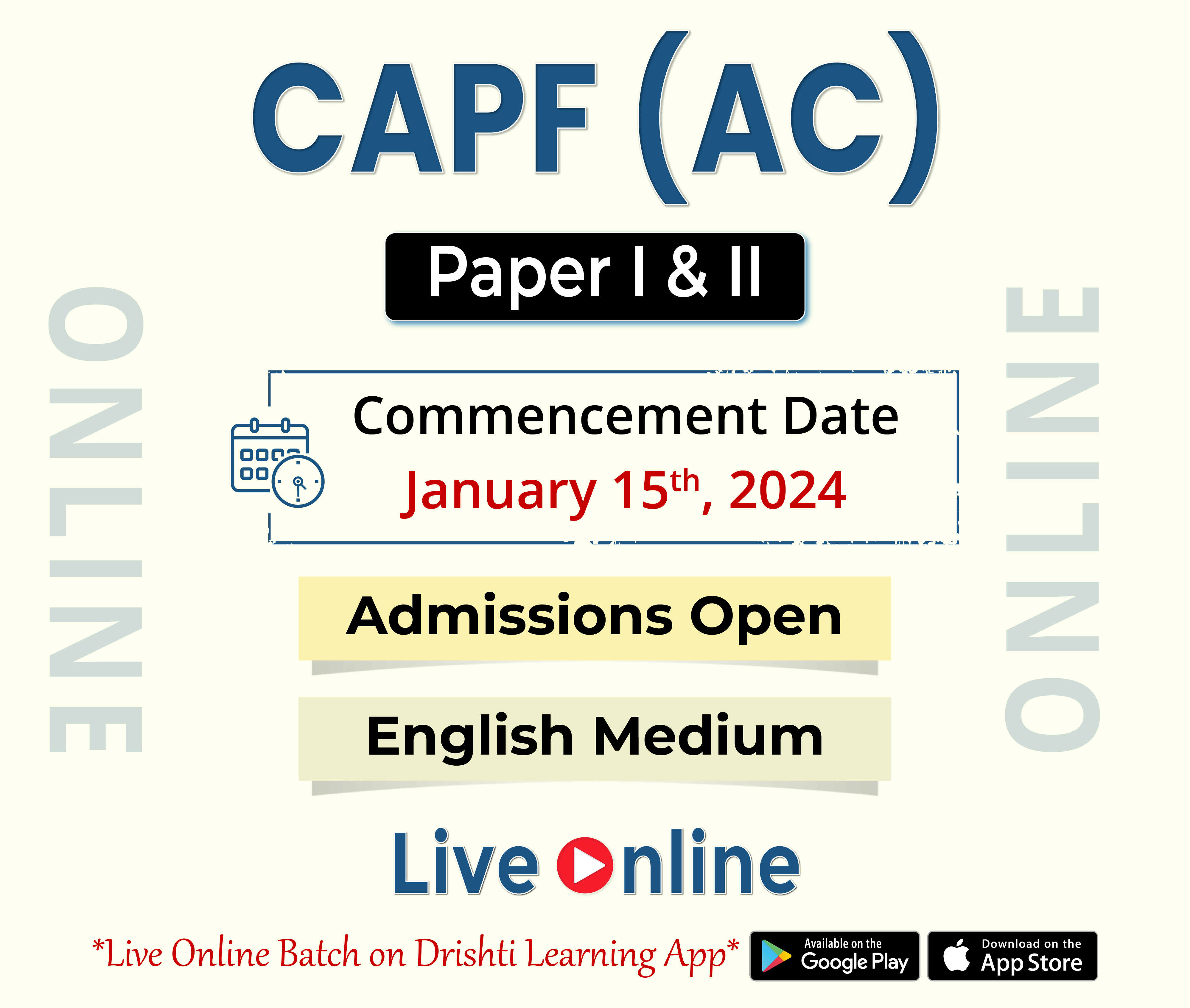
Rapid Fire
Man Portable Anti-Tank Guided Missile
Recently, a man-portable anti-tank guided missile (MPATGM) weapon system, indigenously designed and developed by the Defence Research and Development Organisation (DRDO) has been field evaluated in different flight configurations several times.
- Anti-tank guided missile is a medium or long-range missile whose primary purpose is to destroy tanks and other armoured vehicles.
- It is a low-weight, fire-and-forget missile. It is incorporated with state-of-the-art Miniaturized Infrared Imaging Seeker along with advanced avionics.
- It is launched using a tripod designed for a maximum range of 2.5 km with a launch weight of less than 15 Kg. It can also be carried by a soldier’s shoulder itself.
- The system consisted of the MPATGM, Launcher, Target Acquisition System, and the Fire Control Unit.
- The ATGM system is well-equipped with day/night and top attack capability.
Read more: Akash-NG & MPATGM


Important Facts For Prelims
Disaster Relief Funds From the Centre
Why in News?
Recently, the Tamil Nadu Government has filed a suit at the Supreme Court claiming that the Centre is withholding National Disaster Relief Funds (NDRF), after Cyclone Michaung and consequent Floods hit the state in December 2023.
- Earlier the Karnataka government had also filed a plea with the apex court, claiming that the Centre is denying disaster relief funds that are necessary to aid drought-affected areas in the state.
How are States Assisted During a Natural Disaster?
- States receive assistance during natural disasters through various mechanisms established under the Disaster Management Act, 2005.
- This legislation defines a disaster as any significant event, whether natural or man-made, causing substantial loss of life, human suffering, property damage, or environmental degradation beyond the community's coping capacity.
- The Act established the National Disaster Management Authority (NDMA), along with State Disaster Management Authorities (SDMAs).
- These entities work in conjunction with district-level authorities to form an integrated disaster management system in India.
- Funds for disaster relief are available to states from two sources — the State Disaster Relief Fund (SDRF) and the National Disaster Relief Fund (NDRF).
- These funds were created with the enactment of the Disaster Management Act, 2005 (DMA), following the devastating tsunami of December 2004.
How are Funds Released to States from the NDRF?
- National Disaster Relief Fund:
- National Calamity Contingency Fund (NCCF) was renamed as National Disaster Response Fund (NDRF) with the enactment of the Disaster Management Act, 2005.
- It is defined in Section 46 of the Disaster Management Act, 2005 (DM Act).
- It is managed by the Central Government to meet the expenses for emergency response, relief and rehabilitation due to any threatening disaster situation or disaster.
- It supplements the SDRF in case of a disaster of a severe nature, provided adequate funds are not available in the SDRF.
- National Calamity Contingency Fund (NCCF) was renamed as National Disaster Response Fund (NDRF) with the enactment of the Disaster Management Act, 2005.
- Fund Released to States:
- NDRF Guidelines: As per the January 2022 Operational Guidelines for Constitution and Administration of the NDRF, funding has been allocated for the NDRF from the fiscal year 2021-22 until 2025-26.
- Assistance Request from the NDRF: In instances where a state lacks adequate funds in the SDRF and has experienced a national calamity beyond its coping capacity, it can request assistance from the NDRF.
- Evaluation of the Situation: The Ministry of Home Affairs (MHA) or the Ministry of Agriculture will evaluate the situation and decide on the need for additional assistance from the NDRF, following a specified process outlined in the guidelines.
- Formation of Inter-Ministerial Central Team (IMCT): This process entails the immediate formation of an IMCT by the MHA to assess the affected areas and recommend whether additional funds are necessary.
- Subsequently, a sub-committee of the National Executive Committee, composed of relevant central ministry secretaries, will determine the amount of funding available.
- High-Level Committee: Ultimately, a high-level committee chaired by the Home Minister, along with the Ministers for Agriculture and Finance, and the vice-chairman of NITI Aayog, will authorise the release of NDRF funds based on the recommendations provided.
What is the State Disaster Relief Fund?
- About:
- SDRF has been constituted under Section 48 (1) (a) of the Disaster Management Act, 2005.
- It was constituted based on the recommendations of the 13th Finance Commission.
- It is the primary fund available with the State governments for responses to notified disasters to meet expenditure for providing immediate relief.
- It is audited by the Comptroller and Auditor General of India (CAG) every year.
- SDRF has been constituted under Section 48 (1) (a) of the Disaster Management Act, 2005.
- Contribution:
- The Centre contributes 75% of the SDRF allocation for general category States and Union Territories and 90% for special category States and Union Territories (northeastern States, Sikkim, Uttarakhand, Himachal Pradesh, Jammu and Kashmir).
- Disaster (s) Covered under SDRF:
- Cyclones, drought, earthquakes, fire, flood, tsunami, hailstorms, landslides, avalanches, cloudbursts, pest attacks, frost and cold waves.
- Local Disasters:
- A State Government may use up to 10% of the funds available under the SDRF for providing immediate relief to the victims of natural disasters that they consider to be ‘disasters’ within the local context in the State and which are not included in the notified list of disasters of the Ministry of Home Affairs.
UPSC Civil Services Examination, Previous Year Questions (PYQs)
Prelims:
Q1. Which one of the following is not a feature of Indian federalism? (2017)
(a) There is an independent judiciary in India.
(b) Powers have been clearly divided between the Centre and the States.
(c) The federating units have been given unequal representation in the Rajya Sabha.
(d) It is the result of an agreement among the federating units.
Ans: (d)
Mains:
Q. With reference to National Disaster Management Authority (NDMA) guidelines, discuss the measures to be adopted to mitigate the impact of the recent incidents of cloudbursts in many places of Uttarakhand. (2016)


Rapid Fire
Nifty Next 50 index
The National Stock Exchange (NSE) has announced the introduction of derivative contracts on the Nifty Next 50 index, set to commence from 24th April 2024.
- The Nifty Next 50 Index represents 50 companies from Nifty 100, excluding the Nifty 50 companies.
- NSE has received approval from the Securities and Exchange Board of India (SEBI) for these derivative contracts.
- The exchange will provide three serial monthly index futures and index options contract cycles.
- Contracts will be cash-settled and expire on the last Friday of the expiry month.
- Derivatives in the market refer to financial contracts between two or more parties and derive their value from an underlying asset or benchmark.
- There are two main types of derivatives:
- Futures, which involve a binding agreement to buy or sell the underlying security on a future date.
- Options, which give the holder the right (but not the obligation) to buy or sell the underlying asset at a predetermined price within a specified period.
- There are two main types of derivatives:
- The NSE is one of the two main stock exchanges in India, with the other being the Bombay Stock Exchange (BSE). It was the first exchange in India to provide modern, fully automated electronic trading.
- NSE emerged as the world's largest derivatives exchange in 2023, in terms of the number of contracts traded, according to the Futures Industry Association (FIA).
Read more: Stock Market Regulation


Rapid Fire
Infectious Respiratory Particles
The World Health Organization (WHO) has introduced a standardised term, 'infectious respiratory particles' (IRPs), to describe pathogens transmitted through the air.
- This move aims to unify terminology across sectors, enhancing scientific and policy guidance while improving public communication regarding respiratory infections like Covid-19, Influenza, measles, Middle East Respiratory Syndrome (MERS), Severe Acute Respiratory Syndrome (SARS), and tuberculosis (TB).
- The WHO's clarification distinguishes IRPs from previously used terms like 'aerosols' and 'droplets,' emphasising a continuum of particle sizes.


Rapid Fire
Goldene
Recently, researchers in Sweden have created ‘Goldene’ – a single-atom layer of gold that can be used in a variety of applications like hydrogen production, and water purification, production of value-added chemicals, communication, and much more.
- They used a modified version of Murakami’s reagent, inspired by an ancient Japanese smithing (forging art) technique, to selectively remove carbon in darkness and prevent cyanide formation, which dissolves gold.
- The researchers used a three-dimensional base material where gold is embedded between layers of titanium and carbon to create Goldene.
- The manipulation of matter on atomic, molecular, and supramolecular scales, (about 1 to 100 nanometers) is termed as Nanotechnology. One nanometer (nm) is one-billionth or (10-9) of a meter.
- This new form of gold has different properties than regular gold similar to the case of graphene.
- For example: Gold is usually a metal, but if a single atom layer thick gold can become a semiconductor instead.
Read More: Nanotechnology


Place In News
Hokkaido, Japan’s Garden of Gods
Recently, a record-high temperature of 26 degrees Celsius in Sapporo, Hokkaido was recorded by the Japanese Meteorological Agency.
- Hokkaido's climate is sub-arctic, with an annual average temperature of 8°C and an average annual precipitation of 1,150 mm.
- Hokkaido is the northernmost of the four main islands of Japan (Hokkaido, Honshu, Shikoku, and Kyushu).
- It is bordered by the Sea of Japan (East Sea) to the west, the Sea of Okhotsk to the north, and the Pacific Ocean to the east and south.
- Sapporo is in the southwest on the Ishikari River, is the administrative headquarters.
- The temperature change has implications for Hokkaido's status as Japan's last wild frontier and its traditional identity as the 'Garden of the Gods' for the Ainu people (Indigenous people).


Place In News
Chennai’s Veeranam Lake
According to data from the Chennai Metropolitan Water Supply and Sewerage Board (CMWSSB), Veeranam Lake, a primary water source for Chennai has dried up.
- Veeranam Lake, a vital water source for Chennai, lies in Tamil Nadu's Cuddalore district.
- It was regarded as one of the longest man-made lakes in the world with a length of 14 km.
- The source of Veeranam is the river of Kollidam, which is the Northern distributary of the Cauvery River, where the Vadavaru River links both the Veeranam and Kollidam.
- It was built between 907-955 AD by Chola Prince Rajaditya Chola.
- He named this waterbody after his father’s title-Veeranarayanan.
- It features in the historical novel "Ponniyin Selvan" by Kalki.
Read more: Vembanad, Drought in East Flowing Rivers


Place In News
Lake Kariba of Africa
Recently, the El Nino Weather pattern has induced droughts and heatwaves in the Zambezi region, leading to a drop in water levels at Lake Kariba.
- Kariba Dam is located in the Zambezi River basin between Zambia and Zimbabwe.
- It is the world’s largest man-made lake and reservoir by volume.
- It lies approximately 1300 kilometres upstream from the Indian Ocean. It is 200 kilometres downstream of Victoria Falls on the Zambezi River.
- It provides considerable electric power to both Zambia and Zimbabwe and supports a thriving commercial fishing industry in Africa.
Read more: Lake Victoria, Important Lakes in India



